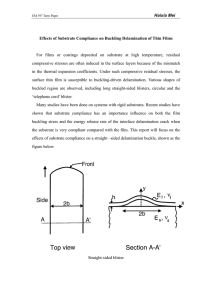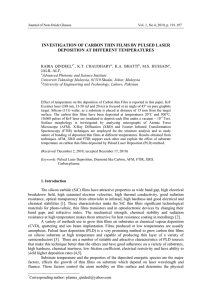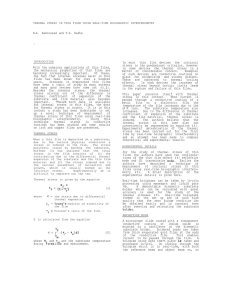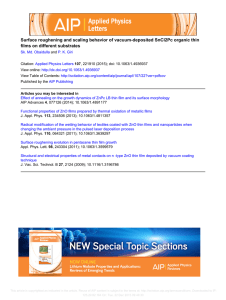Department of Mechanical Engineering 2.800 T Fall 2003
advertisement
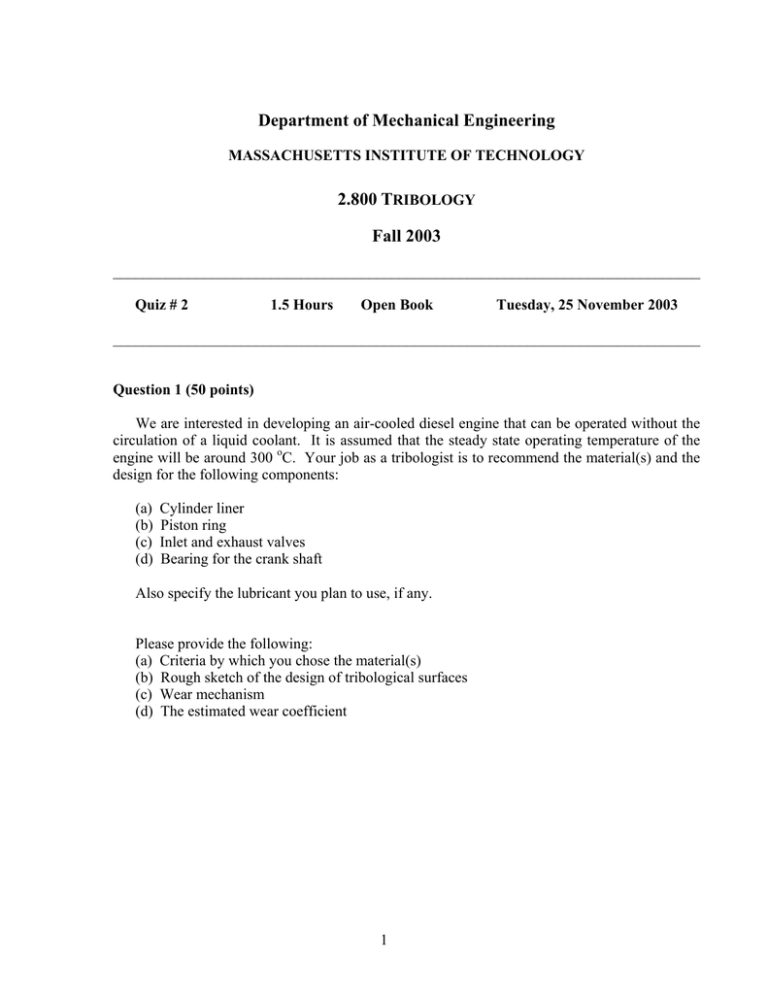
Department of Mechanical Engineering MASSACHUSETTS INSTITUTE OF TECHNOLOGY 2.800 TRIBOLOGY Fall 2003 ______________________________________________________________________________ Quiz # 2 1.5 Hours Open Book Tuesday, 25 November 2003 ______________________________________________________________________________ Question 1 (50 points) We are interested in developing an air-cooled diesel engine that can be operated without the circulation of a liquid coolant. It is assumed that the steady state operating temperature of the engine will be around 300 oC. Your job as a tribologist is to recommend the material(s) and the design for the following components: (a) (b) (c) (d) Cylinder liner Piston ring Inlet and exhaust valves Bearing for the crank shaft Also specify the lubricant you plan to use, if any. Please provide the following: (a) Criteria by which you chose the material(s) (b) Rough sketch of the design of tribological surfaces (c) Wear mechanism (d) The estimated wear coefficient 1 Question 2 (50 points) [Thin, soft metallic films (e.g., Pb, Sn, In, Ag, Au, etc.) are used as solid lubricant films, usually deposited by electroplating, physical vapor deposition, and so on. Such films, often as thin as 0.1 µm, can be successfully used to lubricate high-vacuum or space tribological systems. The coefficients of sliding friction between a steel slider and a steel counterface plated with a soft metallic film can be very low (0.06 for In and 0.09 for Sn) whereas the sliding friction between uncoated metals is much greater. Thin, soft metallic films have also been used to minimize sliding wear by at least an order of magnitude. ] We wish to develop an expression for the lowest friction coefficient of thin film-coated hard surfaces by combining the Hertz contact stress analysis and the shear yielding of thin, soft films. Consider a flat, hard substrate coated with a thin film being loaded by a hard spherical ball of radius R. The elastic properties (E and ν ) of the ball and the flat are the same. We assume that the thin, soft film does not appreciably influence the Hertz analysis of point contacts. (a) How is the normal pressure p(r) radially distributed in the circular contact region? Express the pressure distribution in dimensionless form in terms of po, (the center pressure) and contact radius, a. (b) What is the value of mean pressure pmean (in terms of po) in the contact region? (c) The maximum pressure that can be sustained without yielding anywhere in the contact is given by po = τy / 0.31, where τy is the shear yield strength of the substrate. Now express the normal contact force, N, in terms of τy a, etc. (d) Express the friction force, F, as a product of the contact area and the shear strength of the soft film τf. (e) What is the friction coefficient, µ = F/N, in terms of the shear yield strengths of the film and the substrate (or in terms of the hardnesses)? (f) Estimate the friction coefficient µ if the hardness of the coating is about 60 kg/mm2 and of the substrate 600 kg/mm2. How does it compare with the experimental values quoted above? (g) Finally, please state and comment on all the assumptions involved in the above approach. ______________________________________________________________________________ 2


